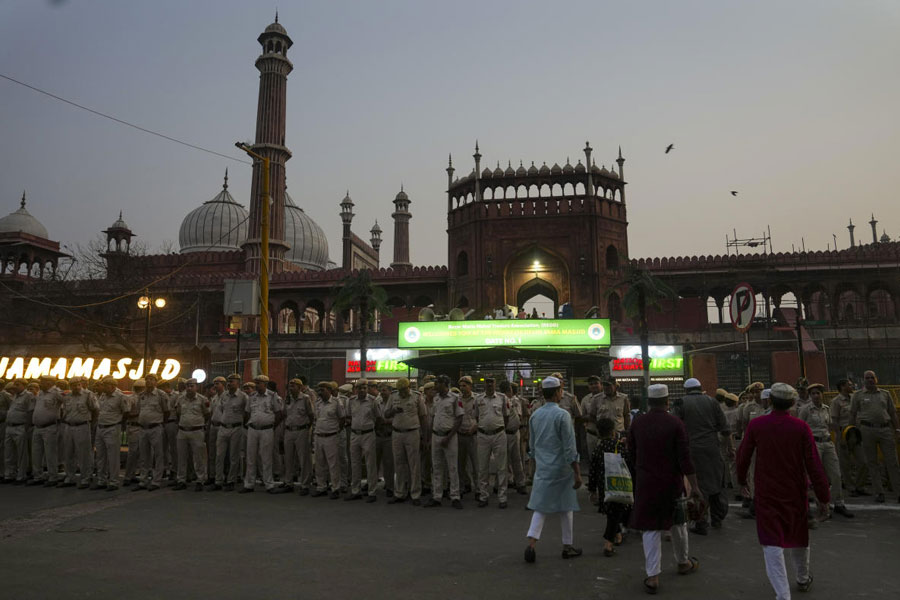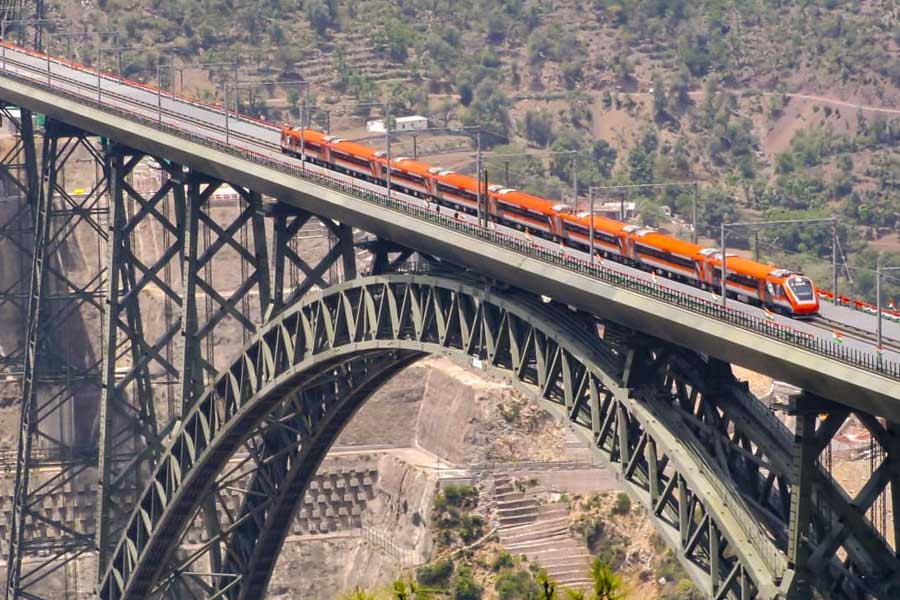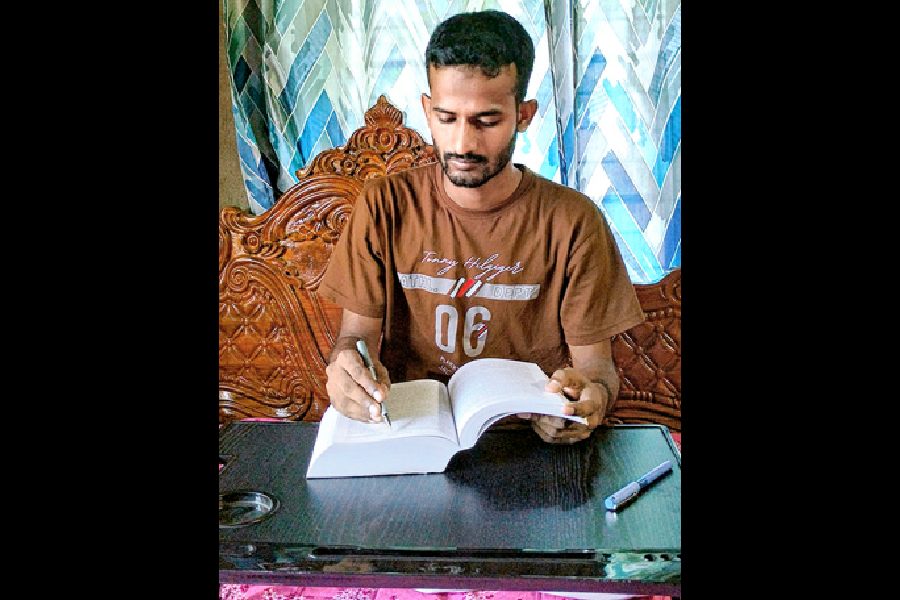 |
| The climbers in this undated picture are not those who climbed Kanchenjungha Main with Chanda Gayen on Sunday |
The sight of the majestic Kanchenjungha peaks that leave the tourist awestruck from a vantage point in north Bengal or Sikkim are for the mountaineer among the most treacherous to climb.
Lack of proper routes, unpredictable weather and the possibility of an avalanche at every step make even mountaineers who have climbed multiple 8,000-metre-plus peaks think twice before setting foot on the world’s third highest mountain.
These and other difficulties at such heights, like low oxygen level in the air and bitter cold, are what Everesters Tusi Das and Chanda Gayen overcame to become the first women from India to hoist the Tricolour on the Kanchenjungha Main (8,586 metres). They were climbing with fellow Everesters from the city, Rajib Bhattacharjya and Dipankar Ghosh.
The four were following in the footsteps of Calcuttans Basanta Singha Roy and Debasish Biswas, who on May 20, 2011, became the first Indian civilians to climb Kanchenjungha.
Singha Roy, who is also an Everester, believes that an expedition to Kanchenjungha is technically more challenging than one to the highest mountain in the world.
He said: “Kanchenjungha lacks a direct route, which often proves to be a confusing and treacherous climb. Besides, the route is plagued by avalanches and inclement weather.”
 |
| Chanda Gayen atop Everest on May 18, 2013 |
According to the Geological Survey of India, Kanchenjungha is the highest peak in India and the easternmost of the peaks higher than 8,000 metres. The range is named Five Treasures of Snow after its five high peaks and has always been worshipped by the people of Darjeeling and Sikkim.
Two of the five peaks are located at Taplejung district in Nepal, while the other three peaks — main, central, and south — stand on the border of North Sikkim and Nepal. Kanchenjungha Main is the second highest peak in the Himalayas after Mount Everest.
 |
| Governor M.K. Narayanan hands Chanda an ice axe with the Tricolour weeks before her Kanchenjungha expedition |
Climbing Everest remains a formidable and the most pursued mountaineering challenge — 16 sherpas were killed in an avalanche on the Everest slopes on April 18 — but improvement in facilities have allowed even 80-year-olds to take a shot at the summit.
The scenario is different on Kanchenjungha.
“While most mountains have reduced fatality rates in recent years because of better logistics, Kanchenjungha remains the exception. In fact, one has to a climb a 600ft tall vertical ice wall to reach Camp I,” said veteran Singha Roy.
In the last 25 years, the fatality rate on Kanchenjungha has remained over 20 per cent and the number of people who have climbed the peak hasn’t crossed 200.
“During our attempt to summit Kanchenjungha, we had to negotiate the Yalung glacier (4,000 metres) for two days at a stretch. Moreover, because of the abundance of hard ice and steep surface, at times even rope-fixing was hard. Kanchenjungha can be bracketed with K2 (8,611 metres) and Thalay Sagar (6,904 metres),” said Singha Roy, adviser to the West Bengal Mountaineering and Adventure Sports Foundation.
Snowfall, whiteouts and blizzards are the most common characteristics of this mountain.
“There is no easy way to the summit, no matter what side or route you choose. Each step gets more and more difficult to the very top. Besides, it can’t be easily tamed with fixed ropes. The climbers, therefore, must be prepared to progress without ropes,” said veteran mountaineer Suparna Mitra.
 |
Experts say logistics are complicated and it becomes difficult to find guides who have previously summited the mountain and are willing to repeat the feat.
“Too long, too cold, too high and too hard are what I can say regarding Yalung Kang (8,505 metres), popularly known as Kanchenjungha West. It is a challenging climb due to its almost vertical peak. And descending the summit is even more difficult,” Mitra said.
Exhaustion, confusing sections in bad weather and avalanches add to the mountaineers’ woes on Kanchenjungha. Other factors, such as the risk of avalanches and mudslides, are also to be considered.
Joe Brown and George Band, who were part of a British expedition, climbed Kanchenjungha first on May 25, 1955. They stopped short of the summit according to their promise given to the Maharaja of Sikkim that the top of the mountain would remain inviolate. Since then, every climber, who has reached the top, follows the same practice.











